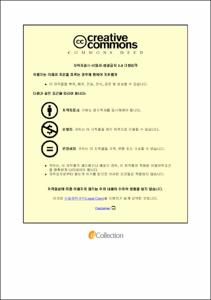Ulsan Univ. Repository
Thesis
General Graduate School
Mechanical & Automotive Engineering
1. Theses (Master)
A STUDY OF AN AIR-SPRING VIBRATION ISOLATOR BASED ON NEGATIVE STIFFNESS STRUCTURE FOR VEHICLE SEATS
- Abstract
- According to vibration theory, classical passive vibration isolators have effect in the frequency region that is higher than √2 times the natural frequency of the system. For input frequencies below √2 times the natural frequency and especially those close to the natural frequency, the vibration level of the classical isolator is really increased in comparison to the vibration level of the system. In order to overcome this issue, a novel vibration isolator system with air-spring (ASVIS) is designed for improving vibration isolation performance of the drive seat under low excitation frequencies. The main feature of the proposed system consists of two symmetric double convolution bellows which are designed by a negative stiffness structure (NSS). In addition, instead of using a vertical mechanical spring, a sleeve air spring is employed to provide positive stiffness. Moreover, a crisscross structure with two straight bars is also used as the supporting legs to provide the nonlinear characteristics with NSS.
In this research, the effects of the dimension parameters on the nonlinear force and nonlinear stiffness of ASVIS are analyzed. A design process for ASVIS is provided based on the analytical results in order to achieve the high static low dynamic stiffness characteristic. Next the dynamic equation of the proposed system is constructed. Then, the harmonic balance method (HB) is employed to evaluate the characteristic of the motion transmissibility of the proposed system at the steady state for each of the excitation frequency. From this characteristic, the curves of the displacement transmissibility are verified based on the configurative parameters of the system.
Then, a sliding mode control (SMC) are designed for the ASVIS. The control strategy is to employ an approximate technique to express one of unknown functions to estimate the equivalent control effort. The stability of the controller is also evaluated in terms of Lyapunov theory.
Finally, numerical simulations are performed to evaluate the effectiveness of vibration isolation of the ASVIS. The results obtained in this paper show that the values of the seat displacement of the ASVIS with NSS are reduced to 77.16% in comparison with the traditional air-spring isolator without NSS, which indicates that the design of the ASVIS isolator with NSS can effectively isolate vibrations in the low-frequency region.
- Issued Date
- 2022
- Awarded Date
- 2022-08
- Type
- dissertation
- Alternative Author(s)
- NGUYEN CONG HUNG
- Affiliation
- 울산대학교
- Department
- 일반대학원 기계자동차공학과
- Advisor
- 안경관
- Degree
- Master
- Publisher
- 울산대학교 일반대학원 기계자동차공학과
- Language
- eng
- Rights
- 울산대학교 논문은 저작권에 의해 보호 받습니다.
- Appears in Collections:
- Mechanical & Automotive Engineering > 1. Theses (Master)
- 파일 목록
-
-
Download
 200000629356.pdf
기타 데이터 / 3.1 MB / Adobe PDF
200000629356.pdf
기타 데이터 / 3.1 MB / Adobe PDF
-
Items in Repository are protected by copyright, with all rights reserved, unless otherwise indicated.